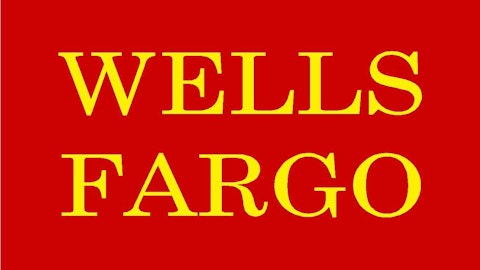Last week, several banks posted their quarterly earnings. Let’s take a look at three of them that seem to be recovering from the financial crisis: Bank of America Corp (NYSE:BAC), Citigroup Inc (NYSE:C) and Goldman Sachs Group, Inc. (NYSE:GS).

Bank of America Corp (NYSE:BAC) posted an outstanding $2.6 billion (or $0.20 per share) in net income for the first quarter of 2013. This is a 400% increase from the first quarter of 2012. But net interest income fell to $10.9 billion, a 1% decrease from Q1 2012. This means that the bank earned less money from lending and investing its deposits.
B of A stated that the decrease owed to the current low-interest-rate environment. These results lagged analysts’ estimates, which predicted $0.23 per share and it was followed by a share price drop of 4.3% in early trading session.
The bank showed an increase in total revenue of 5% to $23.7 billion from the first quarter 2012 mainly due to an improved trading performance. However, its consumer and mortgage segments showed a revenue decline. B of A is still suffering the costs of its ill-fated Countrywide Financial acquisition. It has settled a lawsuit claim regarding home loans with several pension funds for approximately $500 million. Its litigation costs were $881 million in the first quarter of 2013.
Citigroup Inc (NYSE:C): Superb Profits This Quarter
Citigroup Inc (NYSE:C) has certainly recovered from the financial crisis, posting its highest profits for the last three years this quarter.
Its net income for the first quarter rose 30% from the previous year to $3.8 billion. Its revenue also increased 3% from the prior-year period to $20.8 billion. This gain was mainly boosted by an improvement in its investment banking segment and fixed-income trading.
Another aspect that helped that revenue increase was the improvement in credit quality. Loan loss reserves fell 44% year over year, to $652 million.
The bank is also well-capitalized: Its Tier 1 common capital ratio increased to 9.3% from a previous 8.7%, indicating that it has made progress increasing capital requirements to meet the regulators’ new target for financial strength. Those capital requirements are important, because the Federal Reserve could now allow Citi to present a buyback share plan that might improve the value of current shareholders’ positions.
Goldman Sachs Group, Inc. (NYSE:GS) Must Reduce Operating Expenses
Goldman Sachs Group, Inc. (NYSE:GS) has posted $10.1 billion in revenues for the first quarter of 2013, almost flat compared to first quarter 2012. Solid equity and debt underwriting helped boost its investment banking business 36% from the first quarter 2012 to $1.6 billion. Sales from its institutional client services, which account for almost half of its revenue, decreased 10% to $5.1 billion from the first quarter of 2012.
Its lending and investing business did help the firm raise $2 billion (including the ICBC and Facebook Inc (NASDAQ:FB) stake sale). But this one-time event may not generate the same money on the next quarters.
Goldman Sachs Group, Inc. (NYSE:GS) will have to further reduce its biggest expense: compensation. It amounted to $4.3 billion in the first quarter of 2013 — unchanged from the prior-year period — and accounted for 43% of the revenue for that period, a higher number than in previous years. Moreover, operating expenses increased 36% to $6.7 billion for this quarter from the fourth quarter of 2012.

